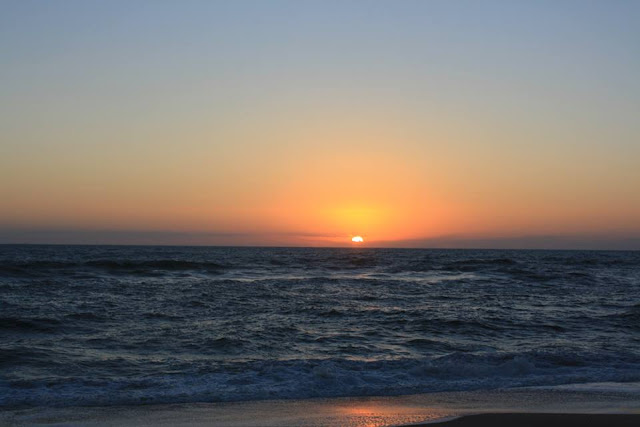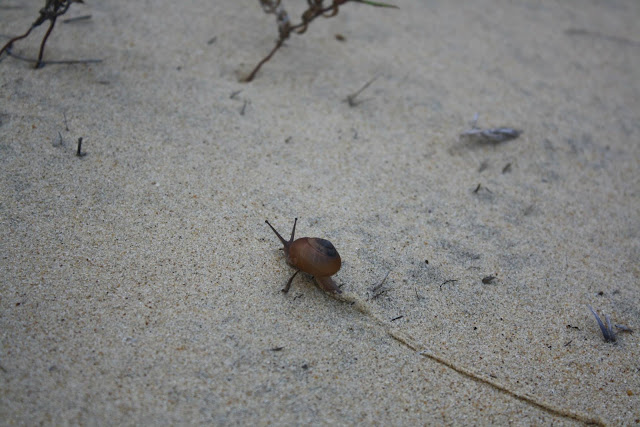Hello Friends!
I thought it would a good time for another blog. I thought it would cool to dive in and learn about the Outer Banks! It is a popular vacation and tourist place as well as a unique place for wildlife. I mostly will just share about my adventure there and hopefully you will learn something new.
Now the outer banks is unique in not only in its history but what is is as well. In regards to history, the big historical events include the Lost Colony and the Wright Brothers Flight. I would encourage you to research these and other historical events from this region, it is interesting. I am not going into much depth than that for the historical part other than a neat quote I found about the wright brother's flight. "The biggest reasons the brothers chose Kitty Hawk, though, were steady winds and, believe it or not, the Outer Banks' proximity to Dayton." ( Dulaney, Todd. "Wright Proud." Our State Sep. 2014: 128-142.)
In regards to what the outer banks are, well they are barrier islands. What are barrier islands you ask? Well, according to Exploring Geology, authors Stephen J. Reynolds, Julia K. Johnson, Michael M. Kelly, Paul J. Morin, and Charles M. Carter writes: "Barrier Island- Offshore of many shorelines are low islands that act as barriers, partially protecting the coast from large waves and rough seas. Many barrier islands are barely above sea level and consist of loose sand, including sand dunes, and salt-water marshes." So, they are what the name says; Barrier Islands.
My adventures began one early morning at a large dune habitat. We hiked around and explored it for awhile.
In regards to what the outer banks are, well they are barrier islands. What are barrier islands you ask? Well, according to Exploring Geology, authors Stephen J. Reynolds, Julia K. Johnson, Michael M. Kelly, Paul J. Morin, and Charles M. Carter writes: "Barrier Island- Offshore of many shorelines are low islands that act as barriers, partially protecting the coast from large waves and rough seas. Many barrier islands are barely above sea level and consist of loose sand, including sand dunes, and salt-water marshes." So, they are what the name says; Barrier Islands.
My adventures began one early morning at a large dune habitat. We hiked around and explored it for awhile.
We found various animal tracks and signs and some various plants. We did find some critters too!
Below are some Toad tracks!
Some more animal tracks as well as various shrubs on the dunes we explored.
Below are some Toad tracks!
 |
| Photo by ME. |
A rather active snail
The next interesting habitat of the Outer Banks I got to explore, was a maritime forest called Nags Head Woods. A maritime forest is well a forest, that is inland from the ocean but close enough to it that they are "pruned by salt spray" (North Carolina Wildlife Viewing Guide by Charles E. Roe) So, I am going to go a little more scientific here than usual, but bare with me.
According to The Nature Handbook: A Guide To Observing The Great Outdoors, author Ernest H. Williams writes: "Salt spray creates smooth contours on coastal trees, As the wind blows droplets of ocean water inland, the high salt concentration kills buds on the windward side of growing tips of the coastal vegetation, but buds on the leeward side are sheltered. As the first stems survive, they block the salt spray, allowing the next next stems and trees downwind to grow a little higher." He goes on write about how parts of the forest is shaped and it is called a sculptured forest.
Below is Nags Head Woods and an example of a maritime forest.
Below is Nags Head Woods and an example of a maritime forest.
 |
| Photo by ME. |
Below is a freshwater pond in the maritime forest, On the fallen tree is an Eastern Cottonmouth (a.k.a the water moccasin). So, there is life within the forest.
Below is a Baby ( the term is"Neonate" in the herp community) Black Racer found in the forest.
 |
| Photo by ME. |
Below is another Eastern Cottonmouth seen on the trip. This was at Nags Head Woods too.
So, it's a pretty neat habitat!
The next leg of the adventure in this workshop took me to a sound estuary to do some dip netting and such. Now, an estuary is "a river valley that has been flooded by the sea, allowing freshwater from the land to interact with salt water from the sea." (Exploring Geology)
The next leg of the adventure in this workshop took me to a sound estuary to do some dip netting and such. Now, an estuary is "a river valley that has been flooded by the sea, allowing freshwater from the land to interact with salt water from the sea." (Exploring Geology)
Below is an estuary we dip netted in. Note: There were rangers from either Wildlife or Jockey Ridge State Park there that helped. Need permission of some kind to do this. Rangers are willing to work with and help out groups if anyone is interested in doing this.
Below are some neat sea animals we captured and eventually released.
Some shrimp and a fish
Some shrimp and a fish
A pig fish I believe and a pipefish
We also caught a needle fish, and some jellyfish among other things. It was neat!
Next we explored around a primary dune habitat which is pretty much the dunes on the beach, close to the ocean, so we explored the beach too.
Below is a beach we explored. Also there is a Sanderling ( bird).
I found a bunch of Skate cases. They are sometimes called Mermaid Purses.
Next we explored around a primary dune habitat which is pretty much the dunes on the beach, close to the ocean, so we explored the beach too.
Below is a beach we explored. Also there is a Sanderling ( bird).
 |
| Photo by ME. |
I found a bunch of Skate cases. They are sometimes called Mermaid Purses.
One of the leaders of the workshop captured this Ghost Crab.
The next trek was a real treat! I got to go explore at Jockey Ridge State Park which is known for all of its dunes, which can be quite tall. In fact, one of the many unique things North Carolina is known for, nature wise is "the tallest sand dunes in eastern America, the highest of which is the 140 foot Jockey's Ridge dune found on the Outer Banks barrier islands." (North Carolina Wildlife Viewing Guide),
My group and myself mostly just hiked around and enjoyed the view. We saw a spectacular sunset and saw a snake track and even found a squirrel treefrog!
So here are photos, though they really do not do the dunes or sunset justice. Be sure to go to Jockey Ridge at some point, it is a must!
My group and myself mostly just hiked around and enjoyed the view. We saw a spectacular sunset and saw a snake track and even found a squirrel treefrog!
So here are photos, though they really do not do the dunes or sunset justice. Be sure to go to Jockey Ridge at some point, it is a must!
 |
| Photo by ME. |
 |
| Photo by ME. |
Snake ( or perhaps a glass lizard) track in the sand.
 |
| Photo by ME. |
 |
| Photo by ME. |
I thought it would be cool to do a black-and-white photo.
 |
| Photo by ME. |
Stunning, isn't?
 |
| Photo by ME. |
 |
| Photo by ME. |
 |
| Photo by ME. |
 |
| Photo by ME. |
Squirrel Treefrog
 |
| Photo by ME. |
So, that was pretty awesome! I think Jockey Ridge is certainly one of my favorite places I have gotten to observe and enjoy nature at. Like, go if you get a chance!
Anyway, the next morning, we were up super early again and we went over to a beach that was across the street from Pea Island National Refuge. We hung out at the beach to watch the sunrise and to do some more beach exploration.
 |
| Photo by ME |
 |
| Photo by ME. |
 |
| Photo by ME. |
Bird Track
 |
| Photo by ME. |
Remains of a Horseshoe Crab
 |
| Photo by ME. |
Our next stop was was at the Pea Island National Refuge itself. We hiked a good bit of the trail and did some birding and nature observation. The highlight finds were a American White Pelican, a Red-bellied Cooter, and a Caspian Tern. So, some cool finds!
At Pea Island National Refuge
 |
| Photo by ME. |
The large, white object in the far back of the picture is the American White Pelican. We saw some Brown Pelicans too.
 |
| Photo by ME. |
Red-bellied Cooter and I think a Yellow-bellied Slider.
 |
| Photo by ME. |
So that was a neat place to explore.
Our final stop before the return to Raleigh, was to the Bodie Island Lighthouse.
 |
| Photo by ME. |
There we hiked along a boardwalk over an estuary. There we saw a few blue crabs, an Osprey, and even a Common Snapping Turtle. That was cool!
 |
| Photo by ME. |
Common Snapping Turtle
 |
| Photo by ME. |
So anyway, that is my adventures of exploring the Outer Banks, So pretty much I stayed in the North Barrier Islands if you want to know where about I was, I would encourage you to get outdoors to explore, its good for you and its a lot of fun, you never quite know what you will encounter.
Feel free to ask any questions you may have!
I will leave you with this photo of a Monarch Butterfly that was found and captured. It was tagged as part of some kind of on going project that monitors where these butterflies go to.
 |
| Photo by ME. |














No comments:
Post a Comment